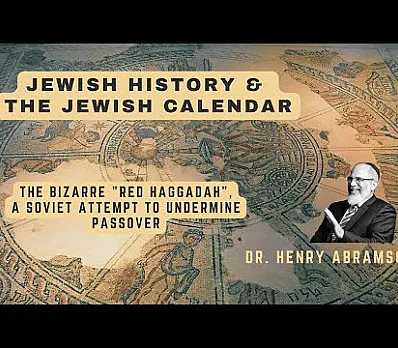Miriam's Cup
Miriam’s Cup
A decade after the introduction of an orange on the seder plate, the ritual of Miriam’s Cup emerged as another way to honor women during the seder. Miriam’s Cup builds upon the message of the orange, transforming the seder into an empowering and inclusive experience.
Although Miriam, a prophet and the sister of Moses, is never mentioned in the traditional Haggadah text, she is one of the central figures in the Exodus story.
According to Jewish feminist writer Tamara Cohen, the practice of filling a goblet with water to symbolize Miriam’s inclusion in the seder originated at a Rosh Chodesh group in Boston in 1989. The idea resonated with many people and quickly spread.
Miriam has long been associated with water. The rabbis attribute to Miriam the well that traveled with the Israelites throughout their wandering in the desert. In the Book of Numbers, the well dries up immediately following Miriam’s death. Of course, water played a role in Miriam’s life from the first time we meet her, watching over the infant Moses on the Nile, through her triumphant crossing of the Red Sea.
There is no agreed-upon ritual for incorporating Miriam’s Cup into the seder, but there are three moments in the seder that work particularly well with Miriam’s story.
As Moses’s sister, Miriam protected him as an infant and made sure he was safely received by Pharaoh’s daughter. Some seders highlight this moment by invoking her name at the start of the Maggid section when we begin telling the Passover story. Other seders, such as this one, incorporate Miriam’s cup when we sing songs of praise during the Maggid and later during the Hallel as a reminder that Miriam led the Israelites in song and dance during the Exodus. Still others place Miriam’s Cup alongside the cup we put out for Elijah.
Just as there is no set time in the seder to use Miriam’s Cup, there is no set ritual or liturgy either. Some fill the cup with water at the start of the seder; others fill the cup during the seder. Some sing Debbie Friedman’s “Miriam’s Song”; others sing “Miriam Ha-Neviah” by Rabbi Leila Gal Berner.
As with all seder symbols, Miriam’s Cup is most effective when it inspires discussion.
What does Miriam mean to you? How do all of her roles, as sister, protector, prophet, leader, singer, and dancer, contribute to our understanding of the Exodus story? Who are the Miriams of today?
Inspired to create
your own Haggadah?
Make your own Haggadah and share with other Seder lovers around the world
Have an idea
for a clip?
People like you bring their creativity to Haggadot.com when they share their ideas in a clip
Support Us
with your donation
Help us build moments of meaning and connection through
home-based Jewish rituals.
OUR TOP CONTRIBUTORS
Passover Guide
Hosting your first Passover Seder? Not sure what food to serve? Curious to
know more about the holiday? Explore our Passover 101 Guide for answers
to all of your questions.






















